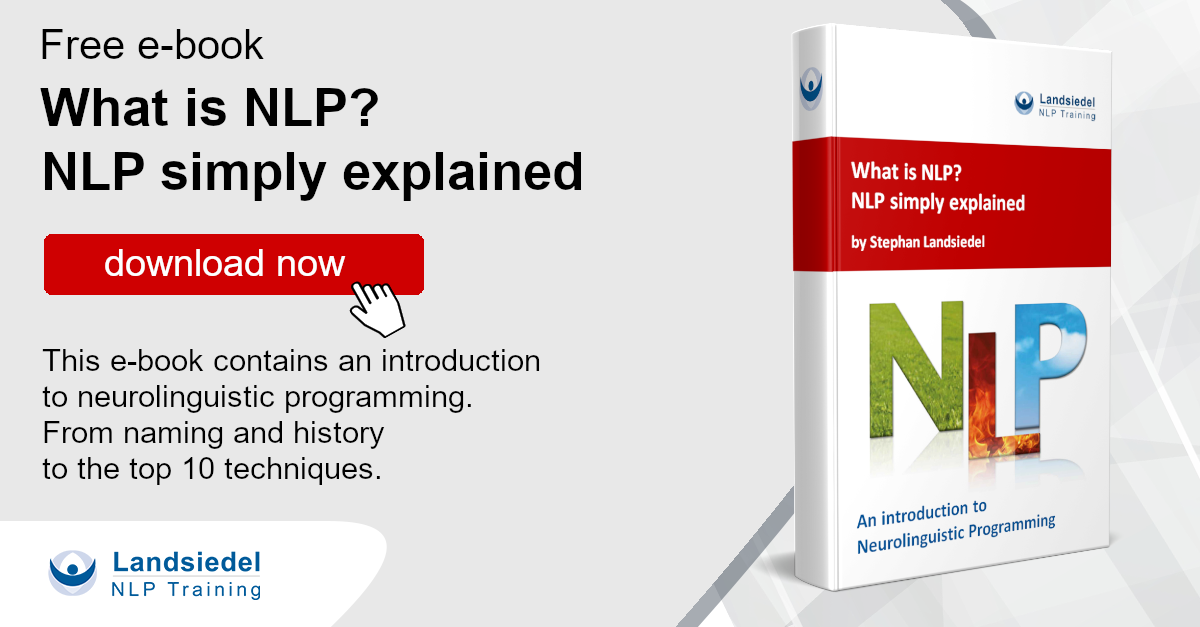Landsiedel NLP Training →
NLP →
NLP Exercises
NLP Exercises
With all the tools, formats and strategies that can be learned with NLP, one should not forget a basic method that is also known and recognized outside the NLP community: The practice.
There is a correlation between NLP and practicing: On the one hand, a training consists mainly of NLP exercises. They should be done in your free time in order to repeat and deepen the learned seminar contents. On the other hand, NLP also supports the ability to practice itself. NLP exercises, methods and strategies are provided, which optimize the organization and execution of exercises and make them more sustainable.
The brain has the ability to memorize a program (whether it is a matter of facts or a sequence of movements) by repeating and replaying it several times by forming circuits belonging to these learning contents. The repeated execution of a program is called practicing. It is the most successful method for creating such an interconnection and thus also neurolinguistic programming in the best sense of the word. Using NLP exercises of any kind is more promising than doing it without any strategy.
NLP exercises exist in various forms, due to the multitude of application areas of NLP, each of which requires certain forms of exercises. There are NLP exercises for couples or groups, in which for example communication and cooperation formats are trained, and NLP exercises that are also or exclusively suitable for individuals. The same applies to the time required: while some exercises take a few minutes (such as the Swish technique), other NLP exercises require considerably more time.
A rule of thumb says that whoever repeats a certain activity every day for three weeks will have adapted the process after this time to the extent that it has become a habit. Repeated performance is still elementary even after that, however, both for the sake of perfection and to prevent one from "getting out of practice". That is why it is a good idea to get together with other NLP users in practice groups and to train NLP exercises and formats together with them.

Calibration
Calibration requires the ability to accurately perceive non-verbal signals and assign the physiology of internal states to external signs.
"Calibration means knowing what the interlocutor is doing internally (e.g. what experience he is remembering) and observing exactly what he looks like externally (what physiology he shows) and remembering it".
– Mohl, 1996
NLP Exercise for Calibration - The Person Guessing
For the exercise two persons are needed. Person A and B.
- Person A asks person B: "Think about a person you like. Observe the facial expression of person B."
Then person A asks person B: "Think about a person you don't like. Watch the facial expression of person B again."
Here there should be a change in the facial expression of person B. Remember this facial expression." - After the first step, person A asks person B: "Which person is taller? The one you like or dislike?" Person B should only think about the person.
In the moment when person B thinks of the person, person A should recognize by the facial expression which person is being thought of. - In this way it is possible to practice recognizing a lot in another person by means of the smallest signals.
Rapport: Pacing and Leading
The prerequisite for any good communication is trust. Most people have few good strategies to create sympathy to other people. NLP teaches a number of very effective methods to bring oneself closer to others and to build a bridge.
Pacing
Person A adopts a similar or identical posture to person B. Unconsciously, person B takes on "Hey, he's like me. He moves like me."
What can all be mirrored, in the field of body language?
- facial expression
- Gestures
- Speed of the language
- Posture
- Sitting position
- Leg position
- Stand position
- Detailed language
After a while a bond of sympathy develops between person A and B. You can test this by taking the lead, the leading.
Leading
Person A checks if person B follows.
Person A changes his posture. Now person A checks if person B also changes his posture. If person B changes his posture, then the leading has worked. Between person A and person B there is now a strong report.
If the leading did not work, person A must start leading again.
NLP-Exercise Crossover Mirroring
For example, in a mirror, person B crosses his legs and person A does the same. So that person A is in the same position as person B. There are situations where it is impractical to do exactly the same as person B.
Like when person B is talking and person A is the listener. While person B is speaking, person A can capture the rhythm and body dynamics of person B and reflect the gestures in head movements. When there are a lot of gestures there should be a lot of head movement.
More on rapport and pacing.
Further NLP Exercises
Further NLP exercises can be found free of charge in our NLP library:

